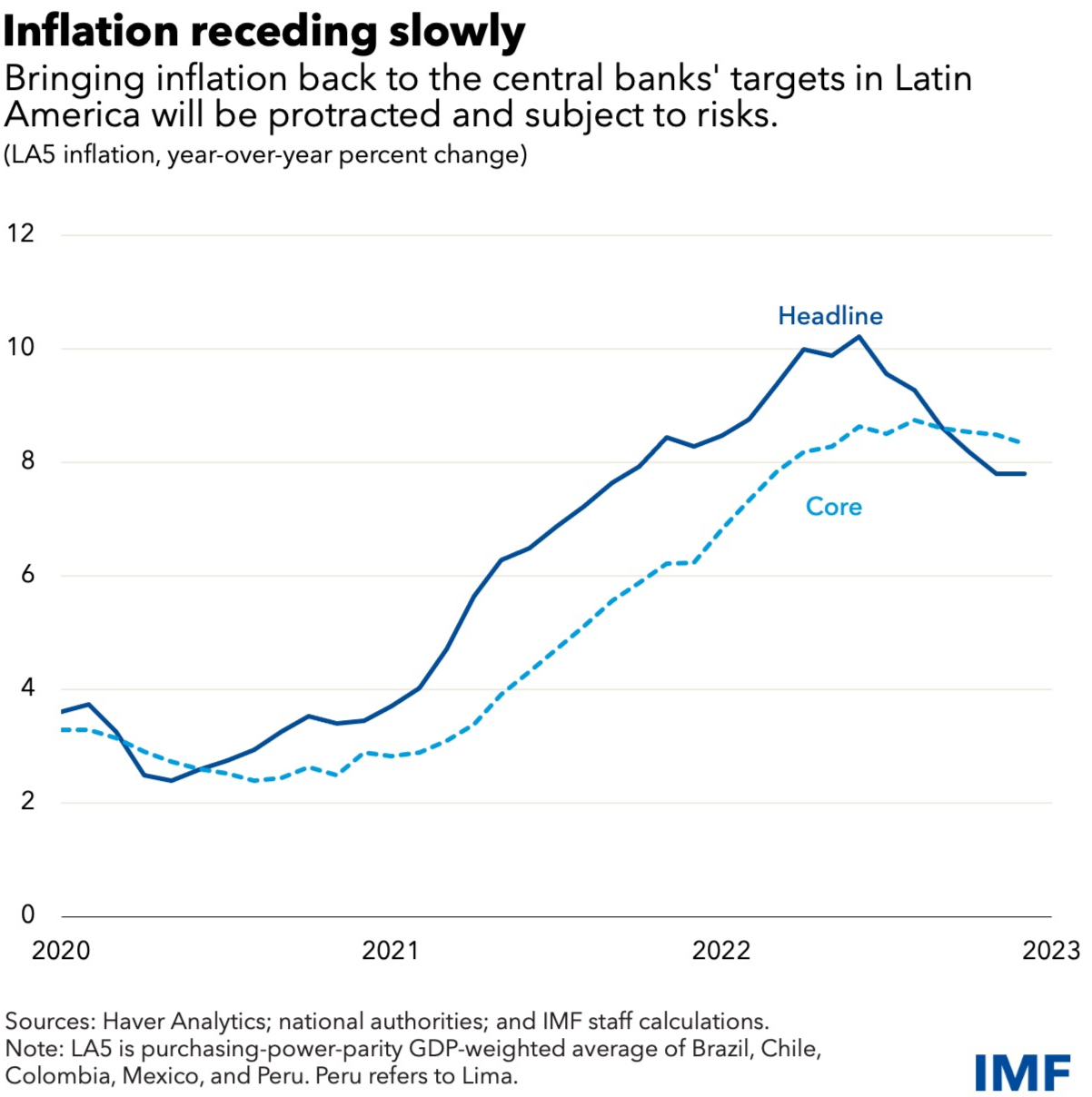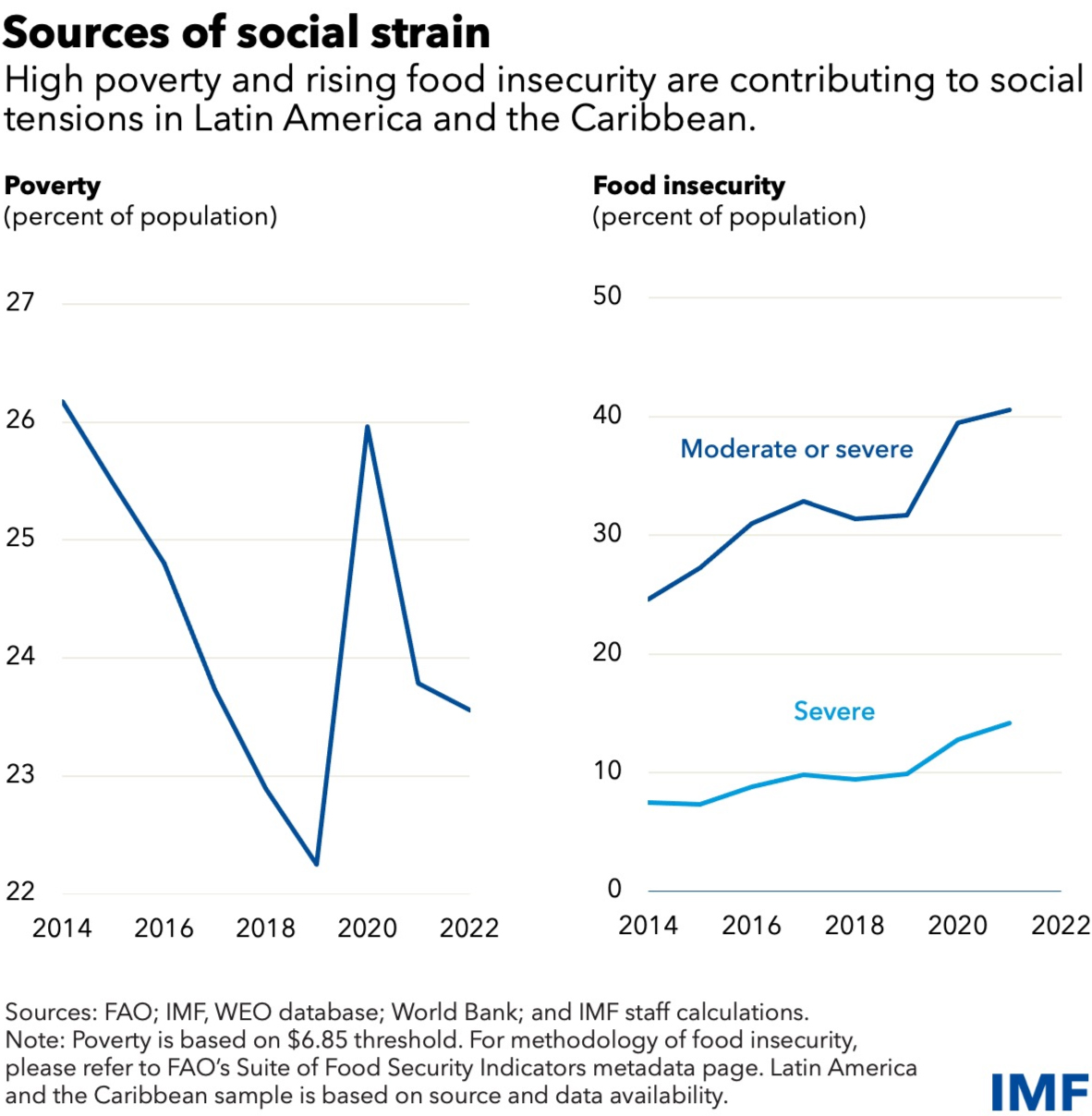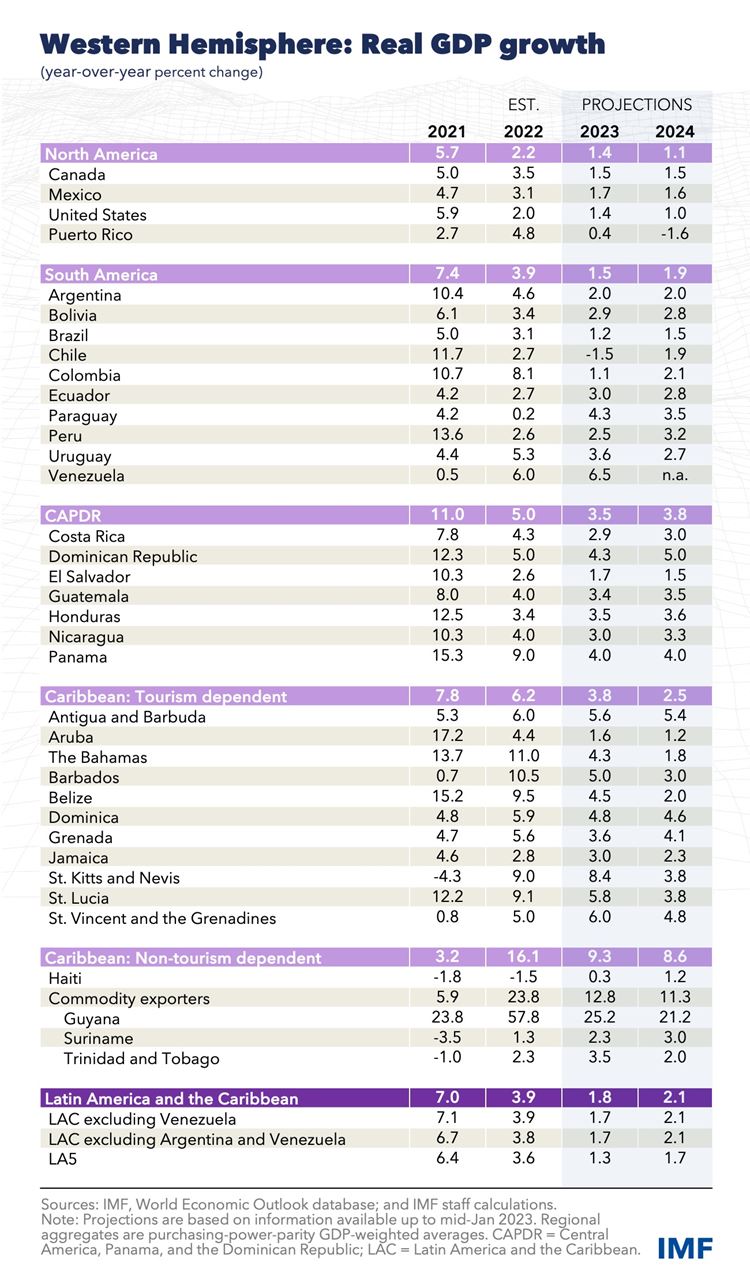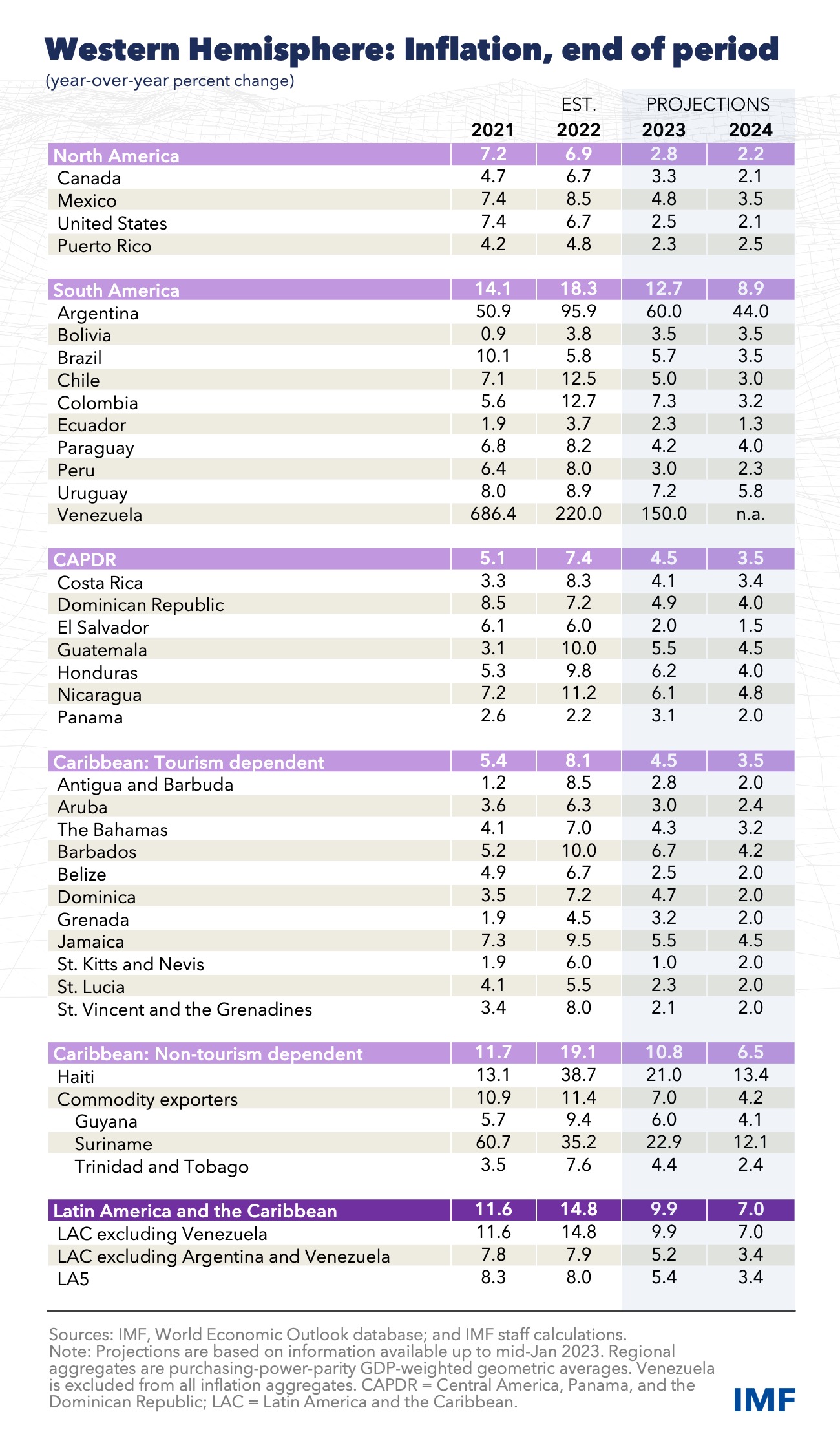Latin America’s economies held up well last year despite the shocks from Russia’s invasion of Ukraine and global interest rate hikes. In 2022, the region’s economy expanded by nearly 4 percent, employment recovered strongly, and the service sector rebounded from the damage caused by the pandemic.
Inflationary pressures are receding in many countries due to the early and determined efforts of central banks as well as lower global prices of food and energy. However, core inflation (that is, excluding food and energy), remains high at around 8 percent in Brazil, Mexico, and Chile (and somewhat higher in Colombia but lower in Peru).
Despite this encouraging news on growth and inflation, 2023 is likely to be a challenging year for the region. Growth this year is poised to slow to just 2 percent, amid higher interest rates and falling commodity prices. Job creation and consumer spending on goods and services are both slowing, and consumer and business confidence are weakening. Growth will also be held back by a slowdown in trading partners, particularly the United States and the euro area. Moreover, downside risks—including from tighter-than-anticipated financial conditions and Russia’s war in Ukraine—continue to dominate.
Furthermore, bringing inflation back down to central banks’ targets is likely to be a protracted process that is subject to risks, including from increases in wage pressures.
A challenging socio-economic outlook
Slowing growth, high inflation, and global uncertainty mean that many people in the region will see their living standards decline this year and will likely face increased anxiety about their future.
Growing social discontent and diminished trust in public institutions has been an important trend in the region for some time. Social tensions were certainly exacerbated during the pandemic. Poorer people—particularly those employed in in-person services—bore the brunt of the economic fallout. While government support helped, many were unable to fully insulate themselves from the negative impact, as shown by the noticeable increase in poverty. Increased food insecurity is also a key symptom of the lasting socioeconomic effects of the pandemic.
The region’s middle class also faces a more unstable economic situation. Many small businesses struggled during the lockdowns and the wages of middle-income workers were eroded by the subsequent surge in prices.
Reversing these trends and the impact of the pandemic requires restoring macro-economic stability and boosting growth durably through structural reforms. But finding common ground to pursue sensible economic reforms in an environment of important social tensions will be an uphill battle. At the same time, the continuing possibility of unrest and political paralysis has the potential to erode confidence and weigh on economic activity.
Forging a path forward
Despite evident difficulties, policies must focus on securing economic stability, spurring growth and job creation, supporting entrepreneurship, and attending to the pressing social needs facing many people in the region. This will help to mitigate social discontent and restore confidence in public institutions. However, these actions require determination, persistence, and building social consensus across a range of issues:
- Central banks must not weaken their resolve to bring down inflation,
which will require tenacious effort. While rate hikes in many of the
region’s economies are close to ending, interest rates will likely need to
stay high for some time to ensure that inflation returns back down to
target.
- Fiscal policy will need to emphasize social spending to support the poor
at the same time as bringing down the public debt. Achieving these goals
will require mobilizing revenues in a progressive, growth-friendly, and
equitable manner. Trust in government will continue to be undermined as
long as the wealthy don’t pay their fair share in taxes. Equally important is that governments carefully prioritize
spending and pay attention to ways to enhance the credibility of public
institutions—emphasizing good governance and transparency will be key.
- Building on the recent progress, safety nets in the region must continue
improving to ensure reliable and sufficiently generous social assistance
for those who need it most.
- These steps must not crowd out the deeper policy changes that are needed to improve productivity, incentivize investment, and facilitate job creation. Such reforms will be the principal means, over time, to raise the living standards of the region’s population.










